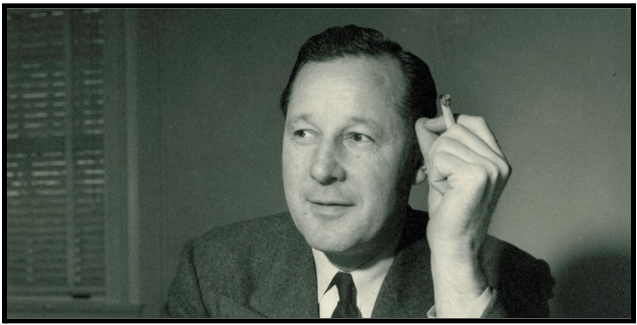He who chases two rabbits catches none.
– Confucius
A proverb is a sentence or phrase that captures your point. It boils all the stories, talking points, and examples down to the essence. They help our listeners understand and remember our Big Idea.
Proverbs contain wisdom. Cervantes defined proverbs as “short sentences drawn from long experiences.” Proverbs can survive thousands of years because they convey useful information. And deliver it in a memorable, simple, clear way.
(Before you can create an awesome proverb, you want to have a well-clarified message. Use the Bo Method to help you distill your key point and why it matters.)
Principle: Be Clear
Your proverb should capture and illuminate your Big Idea. Gold standard: a listener or reader will get the gist of your idea, even if they’ve only heard the proverb.
For example:
- Just do it. Nike’s proverb captures the idea of getting out and working hard – no matter your skill level. You understand this intuitively without needing a slide deck to explain it.
- It’s just a box. The Institute for Justice used this proverb in a case fighting occupational licensing for building caskets. Once you know that it = casket, you get the main thrust of the attorneys’ argument without needing to read the legal brief.
- Build back better. Make America great again. These slogans capture an idea people can get behind without knowing the policies that will achieve it (for better or worse).
Follow the tactics of clear communication to improve how well your proverb elucidates your Big Idea:
- Remove jargon. If your mom doesn’t know a word in your proverb, find a different word.
- Cut extra words. Adverbs are the most common offender. These are bald-faced qualifiers and have no place in your proverb.
- Use active voice. Passive voice obscures the meaning and action. Avoid words that end in “ing”.
Inherently, any proverb you craft will be clear to you. Your brain built the connection between your proverb and Big Idea, so of course you can see it! This is the curse of knowledge. And it’s difficult to overcome.
Test your proverb out on a variety of people to improve its clarity. When your test subjects get confused, ask them why. Listen to them and iterate based on their feedback.
Principle: Be Simple
The proverb for simple proverbs is simple:
simple = core + compact.
Core: The single most important thing your audience must understand.
Compact: Strip your idea down as far as you can go without losing its essence.
Use short, grade-school-level words. The longest word in any of the example proverbs in the section above is “America”. The Hemingway App is a great tool to test the reading level of your proverb.
Proverbs should be tight. Strive for fewer than 10 words. None of the examples above have more than 4 words.
Convey a single thought. Avoid compound sentences like the plague. If your proverb needs to have multiple parts, go back to your Big Idea. Clarify it until you have a single, overarching point.
Principle: Be Memorable
The whole point of proverbs is to stick your Big Idea in your audience’s head. Listeners will be able to repeat an exceptional proverb days or even years later.
Once you have a clear, simple proverb, try out some of these tactics to make it memorable.
Use repetition intentionally.
Repeated words. Try repeating a word or phrase with an intervening word. A verbal sandwich. Bond, James Bond. Crisis? What Crisis? Run, Forrest, Run! These famous lines are memorable because of the repetition. “I’m James Bond.” likely wouldn’t have cemented itself in pop culture history books.
You can also try using the same word multiple times with different meanings. Please please me. Or a personal favorite: absolute power corrupts absolutely.
Repeated sounds. We love words that begin with the same letter. These pop up everywhere in the English language: Cool as a cucumber. Dead as a doornail. Got your goat. A miss is as good as a mile. Build back better. Keep calm and carry on.
Whether or not you repeat words or sounds, absolutely repeat your proverb. Use it often. Be mindful not to overplay it though, like when presidential candidate Al Gore constantly talked about his “lockbox” plan.
I once presented a website build project kick-off with the proverb “lean machine”. I repeated it so frequently that the team was laughing by the end and repeating it back to me. Definitely a sign they remembered it!
Make your proverb tangible.
Avoid abstract concepts. We can use our senses to examine something that’s tangible. If you can’t smell, feel, hear, taste, or see it, it’s abstract. It’s harder for our brains to connect with abstract concepts. Which means it’s harder for you to put an abstract concept in your audience’s brains.
Bob says to “wrap the pill in some tasties” as a reminder to use stories to share your Big Idea. This is tangible. You can visualize a pill wrapped in cheese to give to a dog. It’s also a variation on the classic: a spoonful of sugar helps the medicine go down.
Advanced tactic: opposites
An antithesis is the exact opposite of something. Summer is the antithesis of winter. Dictatorship the antithesis of freedom. Bureaucracy the antithesis of innovation.
Done well, an antithesis creates a rhythm. United we stand, divided we fall. There’s a beat to it. A repetition (see above). X is Y. Not X is not Y.
As the author Mark Forsyth writes in Elements of Eloquence:
There is something final and certain about a good antithesis. If you said that those who can’t write themselves instead instruct other people on how to write, who would remember? But say “those who can, do; those who can’t, teach” and you sound as though you have sliced the world neatly into two and squeezed it out as an epigram.
Bonus: the Unexpected Antithesis. Inspired by Oscar Wilde: “the well-bred contradict other people; the wise contradict themselves.” The twist makes you stop and consider. And the more your listeners stop and consider your words rather than gloss over them, the more opportunity you have to stick in their memory.
I recently gave a speech designed to inspire women to go on adventures and challenge themselves. My proverb:
Take the path of resistance.
It’s a slight twist on a cliche. It surprises your brain and forces you to think just a little longer about it.
How can you employ an antithesis without using a compound sentence? Probably, you can’t. This is called a tradeoff. If you’ve gotten really, really good at making your proverb simple and clear, you can use this tactic to make it memorable.
“United we stand” is a strong proverb. It’s simple and clear. It only uses 3 words. Each word is in the vernacular. It conveys a visual.
By adding the opposite – united we stand; divided we fall – it becomes memorable. Sure, it includes two separate ideas: unity and division. But they work together to put a single idea in your head.
***
What are your proverbs? What will people remember about you? Your talk? An hour after your done? A day? A year? A century?
Don’t just share your Big Idea. Make it matter. Craft a proverb to capture the essence of your point.
![]() IDEA
IDEA
Craft proverbs that are clear, simple, and memorable.
Test how clear and memorable your Big Idea is. Grab a friend, colleague, or family member who doesn’t know about your idea. Share your Big Idea in less than 10 words. Ask them to explain it back to you. Did they understand you? Can they still explain it an hour later?
If you’re not happy with the results of your test, block time on your calendar to develop a proverb.




